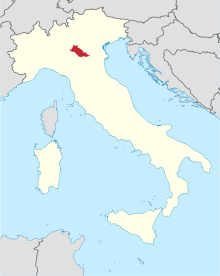
The Archdiocese of Ancona–Osimo is a Latin Church ecclesiastical territory and metropolitan see of the Catholic Church in the Marche region of Italy.

The Diocese of Alba Pompeia or Alba Pompea is a Latin Church ecclesiastical territory or diocese of the Catholic Church in Italy. Its territory comprises eighty towns in the civil Province of Cuneo and two in the Province of Asti.

The Archdiocese of Amalfi-Cava de' Tirreni is an archdiocese of the Latin Church of the Catholic Church, with its episcopal see at Amalfi, not far from Naples. It was named Archdiocese of Amalfi until parts of the Diocese of Cava e Sarno were merged with it on September 30, 1986.

The Diocese of Frosinone-Veroli-Ferentino is a Latin Church ecclesiastical territory or diocese of the Catholic Church in Italy. It has existed since 1986. In that year, the Diocese of Ferentino was united into the Diocese of Veroli-Frosinone, which was the name of the historic Diocese of Veroli from 1956. It is immediately exempt to the Holy See and not part of an ecclesiastical province.

The Archdiocese of Reggio Calabria-Bova is a Latin Church ecclesiastical territory or diocese of the Catholic Church in Calabria, southern Italy. It received its current title in 1986, when the independent Diocese of Bova was suppressed, and the territory and title of the diocese added to that of the Archdiocese of Reggio.
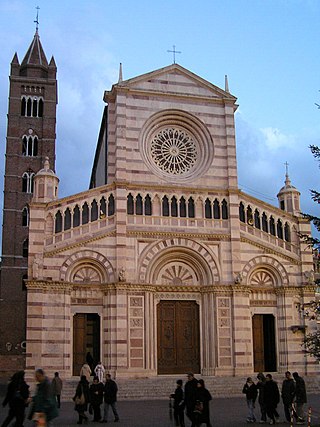
The Diocese of Grosseto is a Latin Church diocese of the Catholic Church in Italy, a suffragan of the archdiocese of Siena-Colle di Val d'Elsa-Montalcino, in Tuscany. Its current bishop is Giovanni Roncari, OFMCap.

The Diocese of Concordia-Pordenone is a Latin diocese of the Catholic Church situated in northeastern Italy, at the northern end of the Adriatic Sea, between Venice and Udine. Since 1818, Concordia Veneta, has been a suffragan of the Archdiocese of Venice. Bishop Andrea Casasola attended the Provincial Council of the Provincia Veneta in October 1859 as a suffragan of the Patriarch of Venice, Cardinal Giuseppe Luigi Trevisanato. The name of the diocese was changed to its present form in 1971.

The Diocese of Gubbio is a Latin diocese of the Catholic Church in the province of Perugia, in Umbria, central Italy.

The Diocese of Lodi is a Latin diocese of the Catholic Church that existed since the 4th century; it is a suffragan of the Archdiocese of Milan.
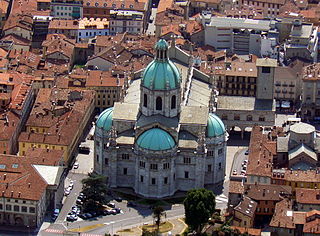
The Diocese of Como is a Latin Church ecclesiastical jurisdiction or diocese of the Catholic Church in northern Italy. It was established in the Fourth Century. It is a suffragan diocese in the ecclesiastical province of the metropolitan Archdiocese of Milan. The Bishop of Como's cathedra is in the Como Cathedral.

The Diocese of Tivoli is a Latin Church ecclesiastical territory or diocese of the Catholic Church in Latium, Italy, which has existed since the 2nd century. In 2002 territory was added to it from the Territorial Abbey of Subiaco. The diocese is immediately exempt to the Holy See.

The Diocese of Arezzo-Cortona-Sansepolcro is a Latin diocese of the Catholic Church. It has existed since 1986. In that year the historic diocese of Arezzo was combined with the diocese of Cortona and the diocese of Sansepolcro, the enlarged diocese being suffragan of the archdiocese of Florence.

The Diocese of Teramo-Atri is a Latin diocese of the Catholic Church in Abruzzo, central Italy. The current extent of the diocese was established in 1949, when the historic Diocese of Teramo was combined with the Diocese of Penne-Atri, in the Abruzzo. It is suffragan of the Archdiocese of Pescara-Penne.

The Archdiocese of Chieti-Vasto is a Latin Church diocese of the Catholic Church which received that name in 1986, when the two separate dioceses, which had been governed by one and the same bishop, were united in one diocese. The diocese of Chieti had become the Archdiocese of Chieti in 1526, when promoted by Pope Clement VII. Chieti is about 8 miles (14 km) south-west of the Adriatic port city of Pescara.
The Catholic diocese of Sarsina was a Roman Catholic ecclesiastical territory in Emilia-Romagna, northern Italy, seated in Sarsina, in the province of Forlì, some 32 km south-southwest of Cesena. The diocese was founded in the 5th century, and was suffragan (subordinate) to the archbishop of Ravenna. The diocese existed until 1986, when it was united with the diocese of Cesena.

The diocese of Teano-Calvi is a Latin diocese of the Catholic Church in Campania, southern Italy, created in 1986. It is a suffragan of the Archdiocese of Naples. The historic Diocese of Teano and diocese of Calvi Risorta were united in 1818, forming the diocese of Calvi e Teano.
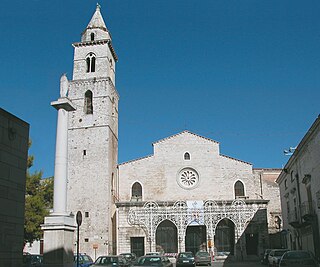
The Diocese of Andria is a Latin diocese of the Catholic Church in Apulia, seated at Andria Cathedral which is built over a church dedicated to St. Peter, about ten miles southwest of Trani. It is a suffragan of the archdiocese of Bari-Bitonto. The diocese has 39 parishes, with one priest for every 1,573 Catholics.

The Diocese of Anagni-Alatri is a Latin Church ecclesiastical territory or diocese of the Catholic Church in Lazio, Italy. It has existed in its current form since 1986. In that year the Diocese of Alatri was united to the historical Diocese of Anagni. The diocese is immediately exempt to the Holy See.
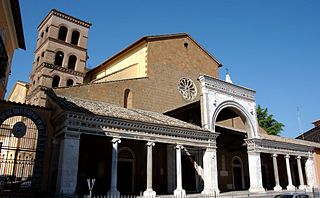
The Diocese of Civita Castellana is a Latin Church ecclesiastical territory or diocese of the Catholic Church in Latium, central Italy. It has existed in the current form since 1986, when the Diocese of Nepi e Sutri was united into the Diocese of Civita Castellana, Orte e Gallese. The Diocese of Gallese had been added to the Dioceses of Civita Castellana and Orte in 1805. The name of the diocese was shortened in 1991, in accordance with Vatican policies. The diocese of Civita Castellana is immediately exempt to the Holy See.

The Diocese of Castellaneta is a Latin diocese of the Catholic Church in Apulia. It is a suffragan of the Roman Catholic Archdiocese of Taranto.

